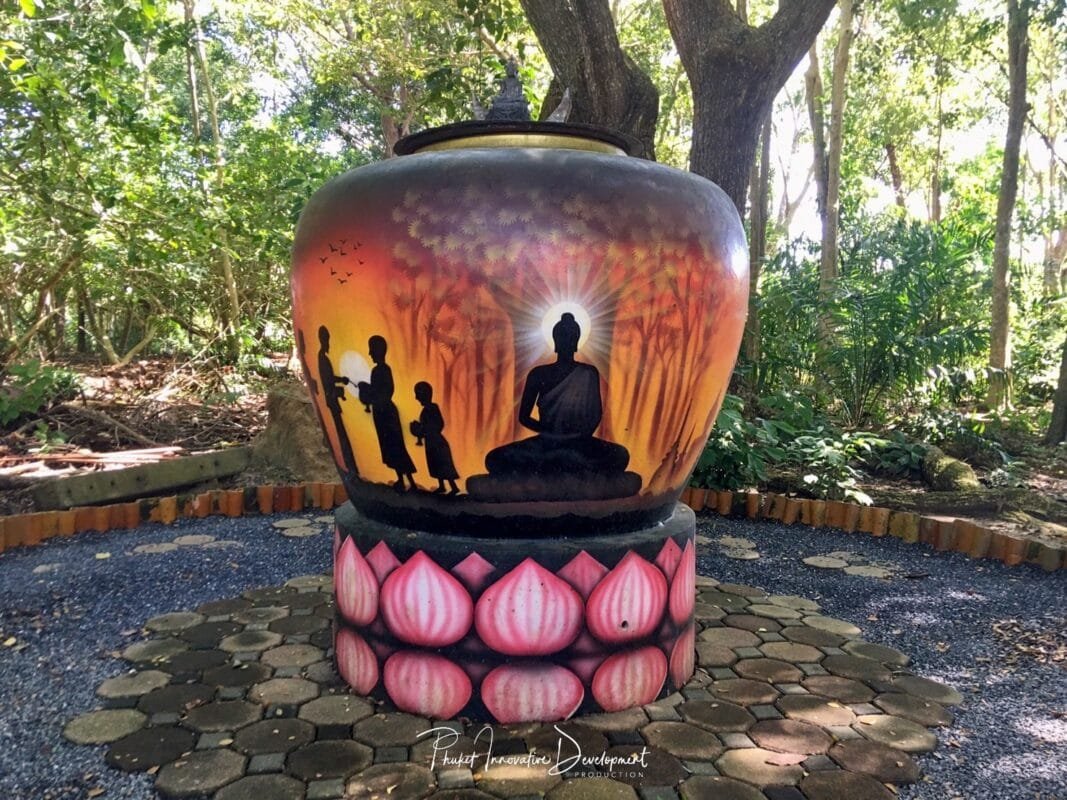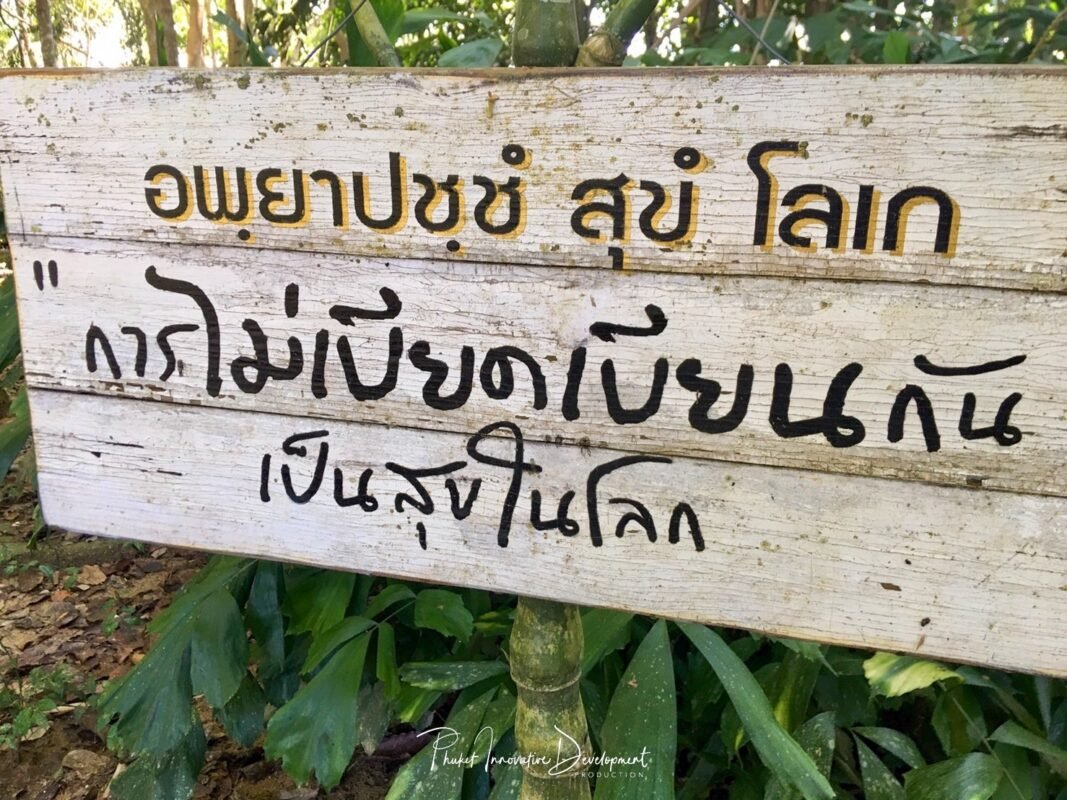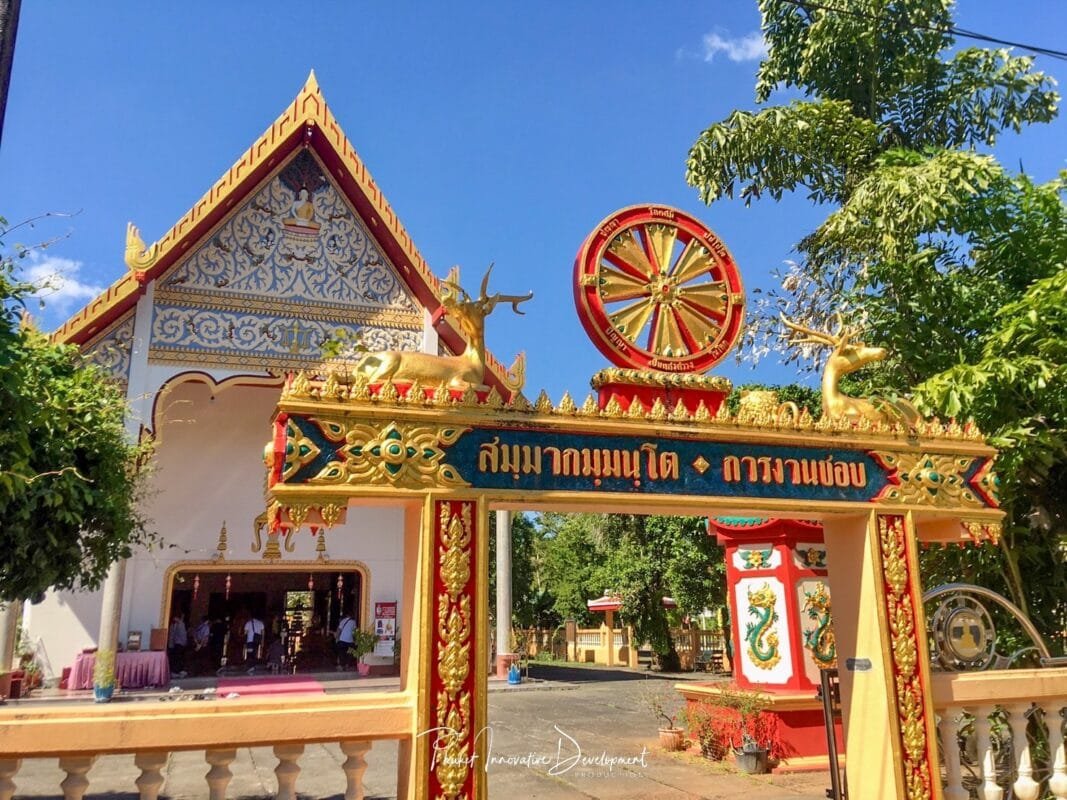
Wat Phra Thong is a temple belonging to the Theravada Buddhist sect, located in Thepkrasattri Sub-district, Thalang District, Phuket Province, Thailand. The temple grounds cover an area of 30 rai, 3 ngan, and 98 square wah. The monastery land comprises 2 plots, totaling 18 rai. This temple was established in the year 2328 B.E. (1785) and received royal patronage on October 10, 2523 B.E. (1980)

The significant structures within the temple include a spacious Ubosot (ordination hall) measuring 8 meters wide and 24 meters long, built in 2524 B.E. The front doors and windows of the Ubosot are adorned with intricately carved teakwood depicting scenes from the Buddha’s life. Inside the Ubosot, there are paintings depicting the Buddha tales, and the floor is paved with soft stones.
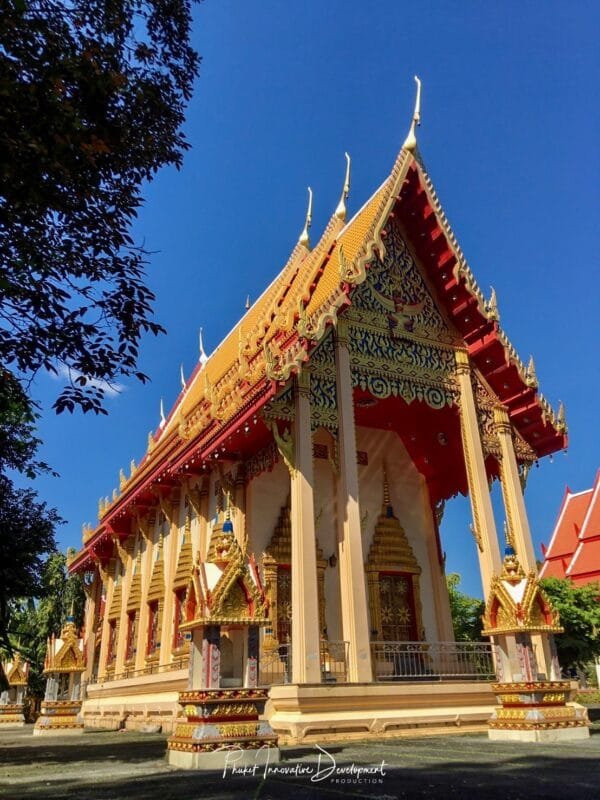
The preaching hall, measuring 16 meters wide and 52 meters long, is a two-story concrete building constructed in 2524 B.E. It houses 7 sermon halls made of wood, concrete, in one and two stories.
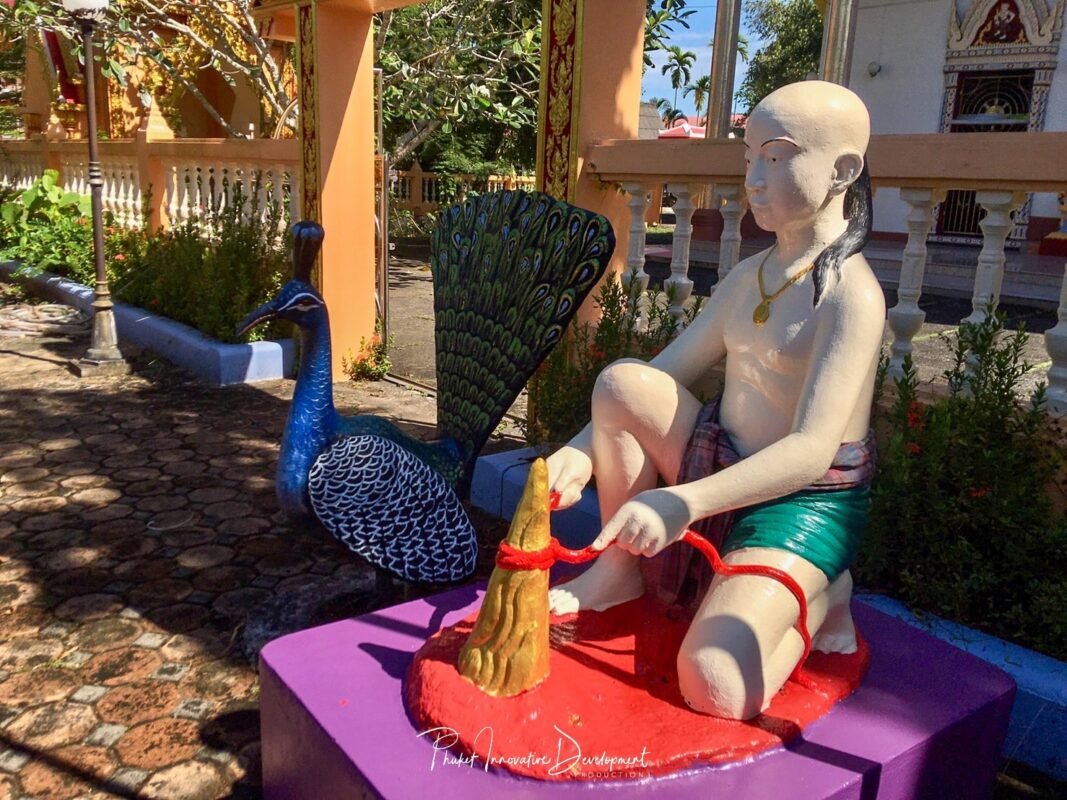
At this temple, a distinctive feature is the presence of an ancient Buddha statue that emerged from the ground, only half of the body visible. The legend associated with this Buddha statue tells that the temple’s current location was once a vast rice field. One day, a boy took a buffalo to graze in the fields and tied the buffalo’s leash to a wooden stake by a canal with clay deposits. Upon returning home, both the boy and the buffalo mysteriously died together.
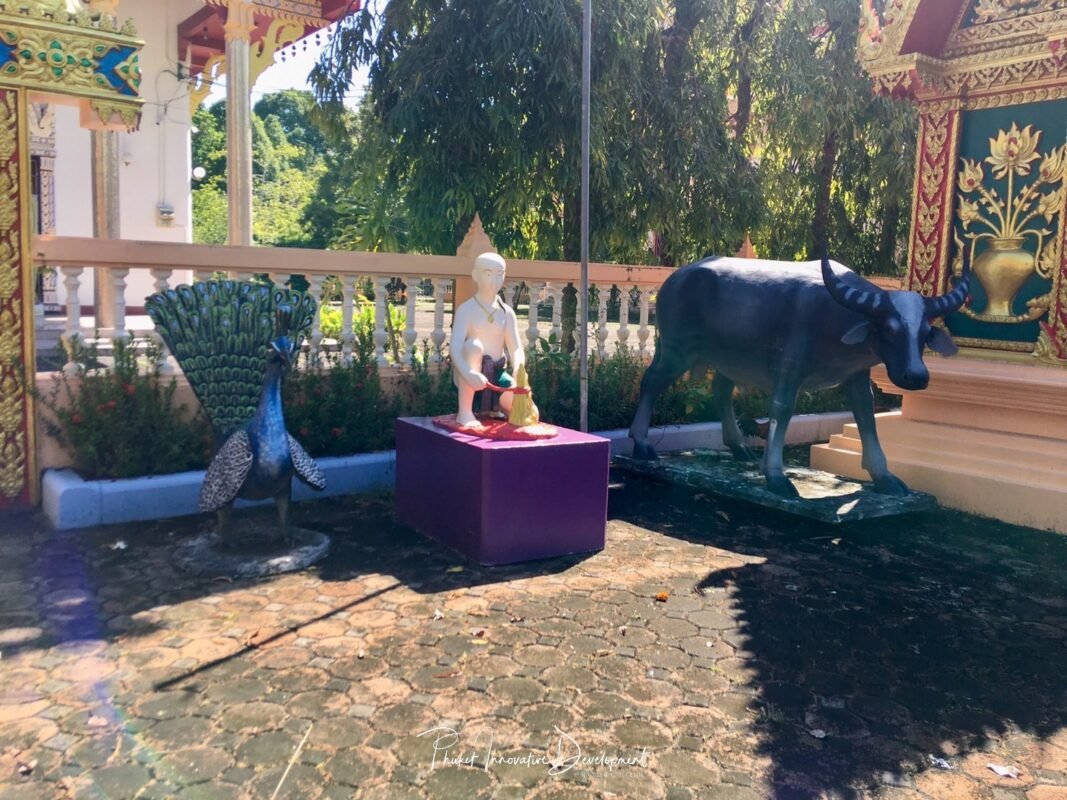
Later, the father of the boy had a dream in which the deaths of the boy and the buffalo were attributed to the act of tying the buffalo’s leash to a wooden stake near the canal where the Buddha statue was buried. He then invited neighbors to excavate the wooden stake along the canal. What emerged bore a resemblance to the features of the Buddha statue and was made of gold.
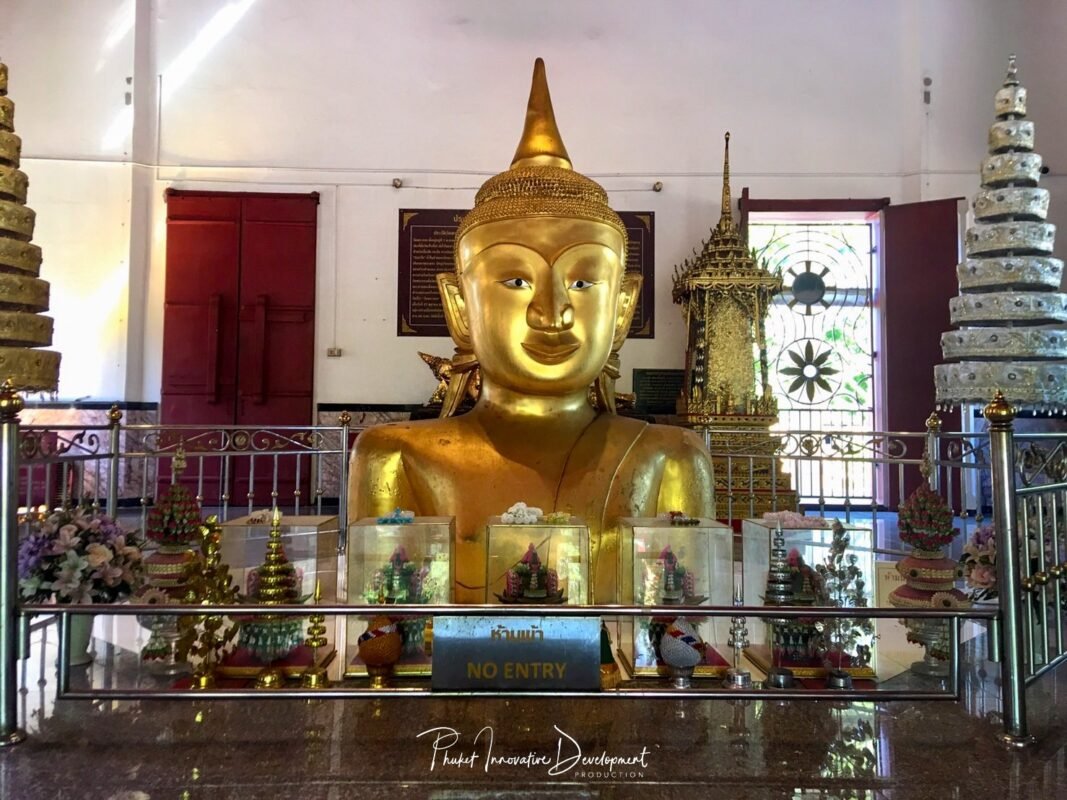
The villagers gathered to worship. When the local authorities learned of the news, they ordered the excavation of the Buddha statue, but it proved impossible to unearth. Some individuals who attempted to touch or draw near the statue experienced poison and met untimely deaths.
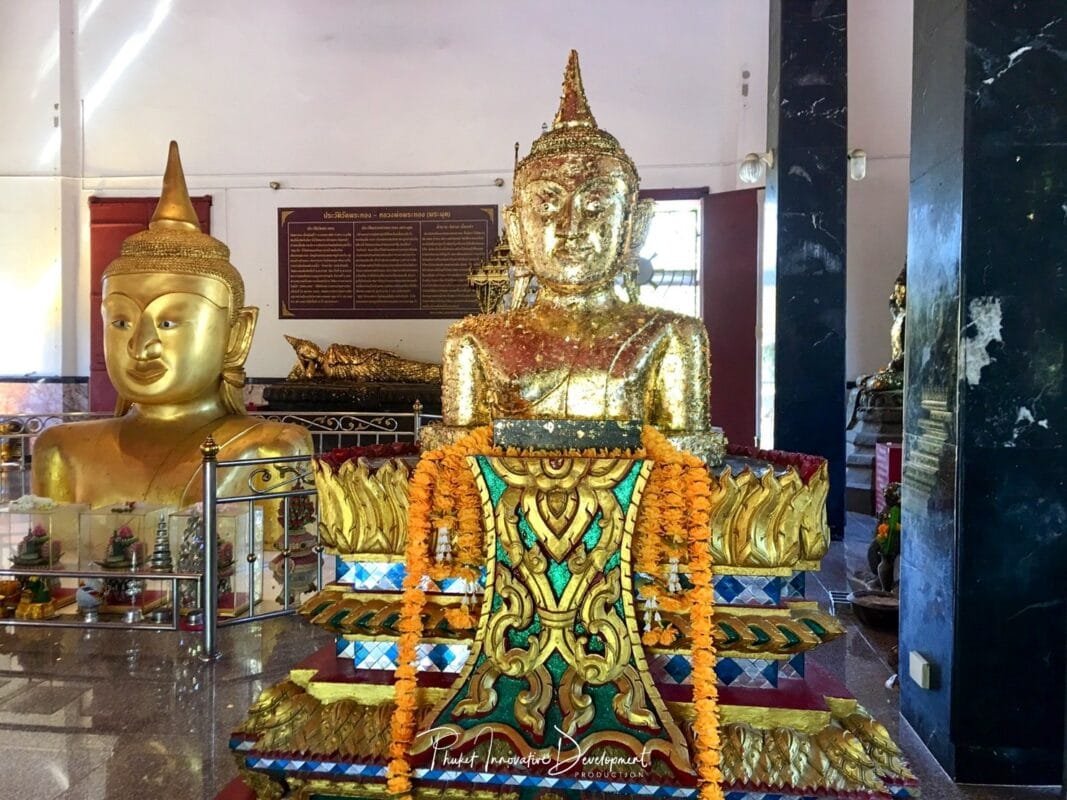
Consequently, the authorities ordered the construction of a structure to cover and protect the site, and the villagers continued to devoutly worship the statue, now known as ‘Phra Phut,’ because it emerged from the ground, specifically from the clay around the buffalo stake.

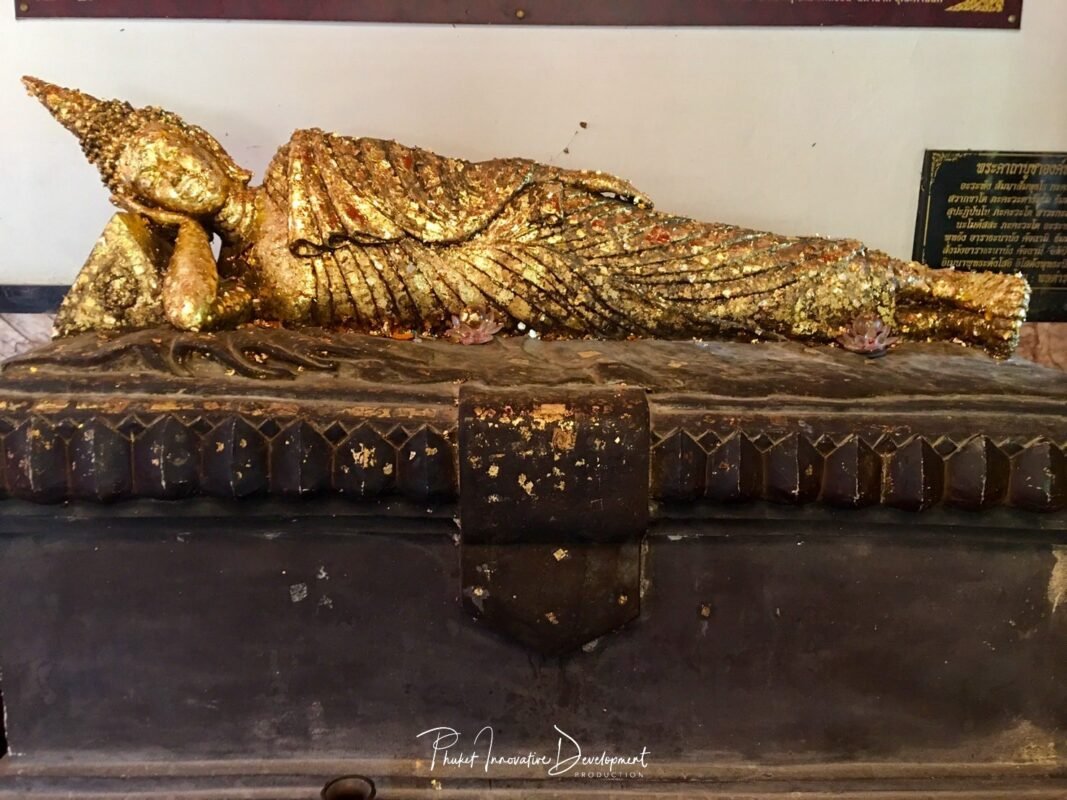
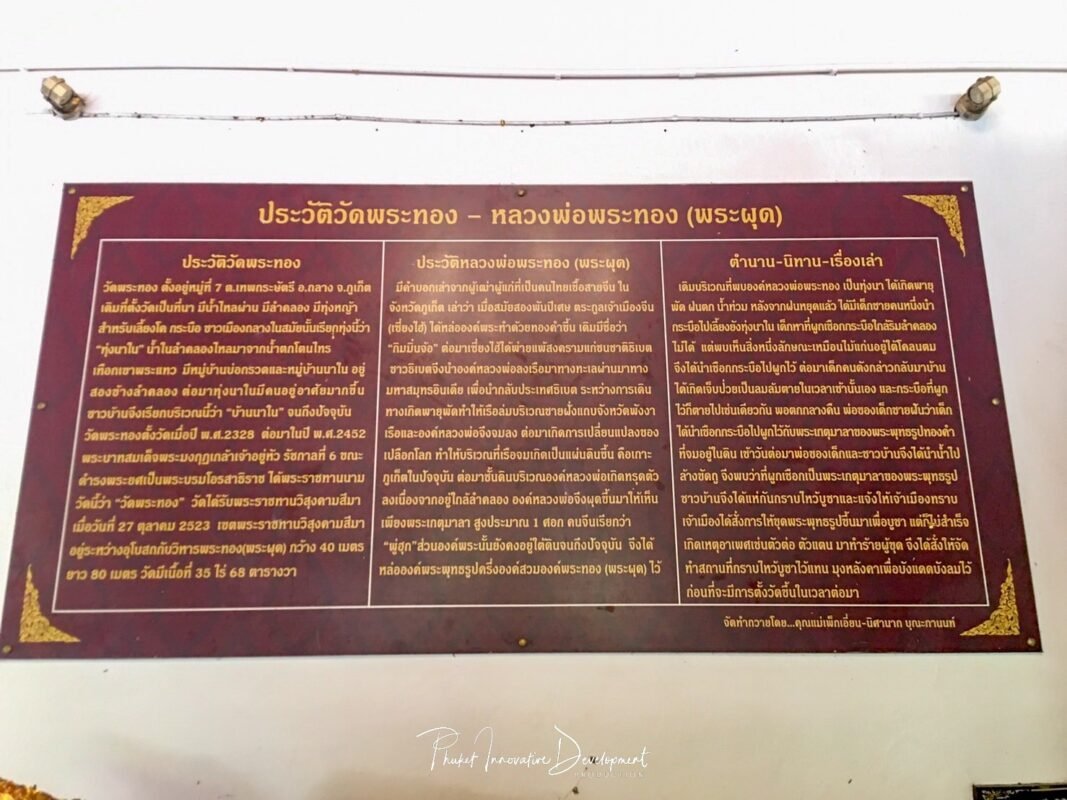
In addition, there is a story related to Phra Phut in the context of the Battle of Thalang during the year 2328 B.E., when Burmese soldiers attacked Thalang. It is said that the Burmese army attempted to excavate the Phra Phut statue to take it back to Burma.
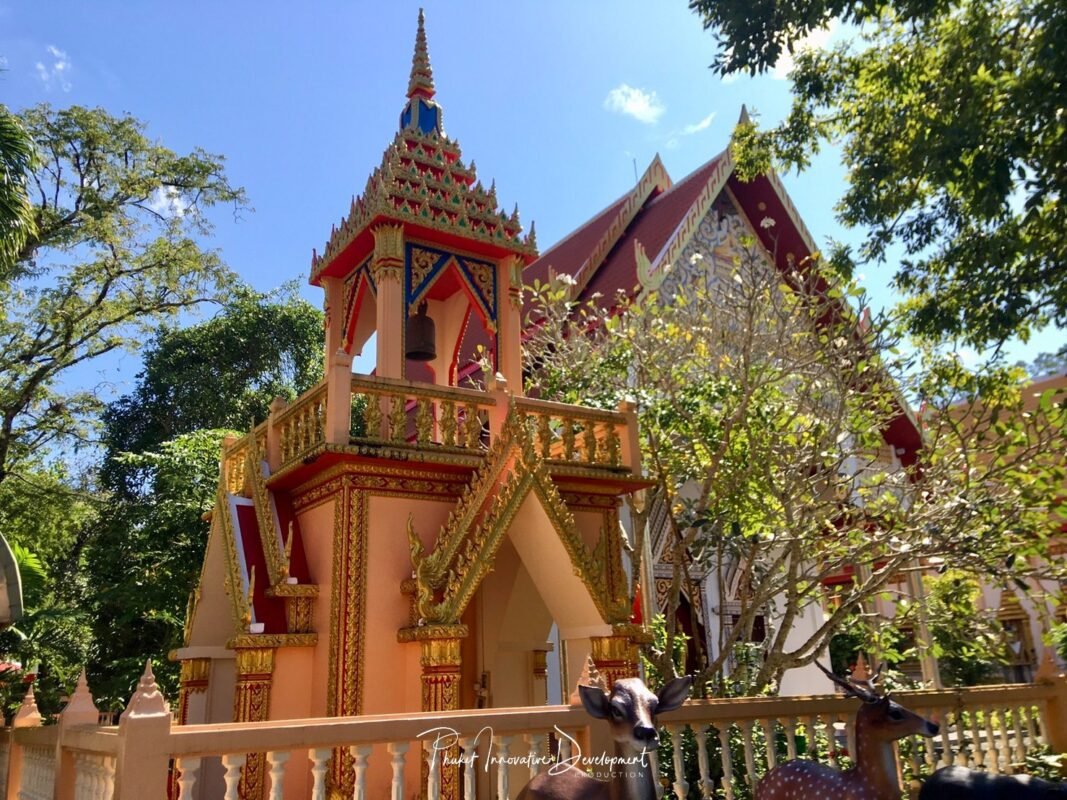
However, every attempt to dig it up was met with swarms of stinging bees, forcing them to abandon their efforts. Eventually, when a forest monk (Phra Thudong) came to this site and a temple was built, Phra Phut was invited to be the principal deity in the ordination hall. It is said that Phra Phut is made of golden material, and another layer of plaster has been applied, as seen today.
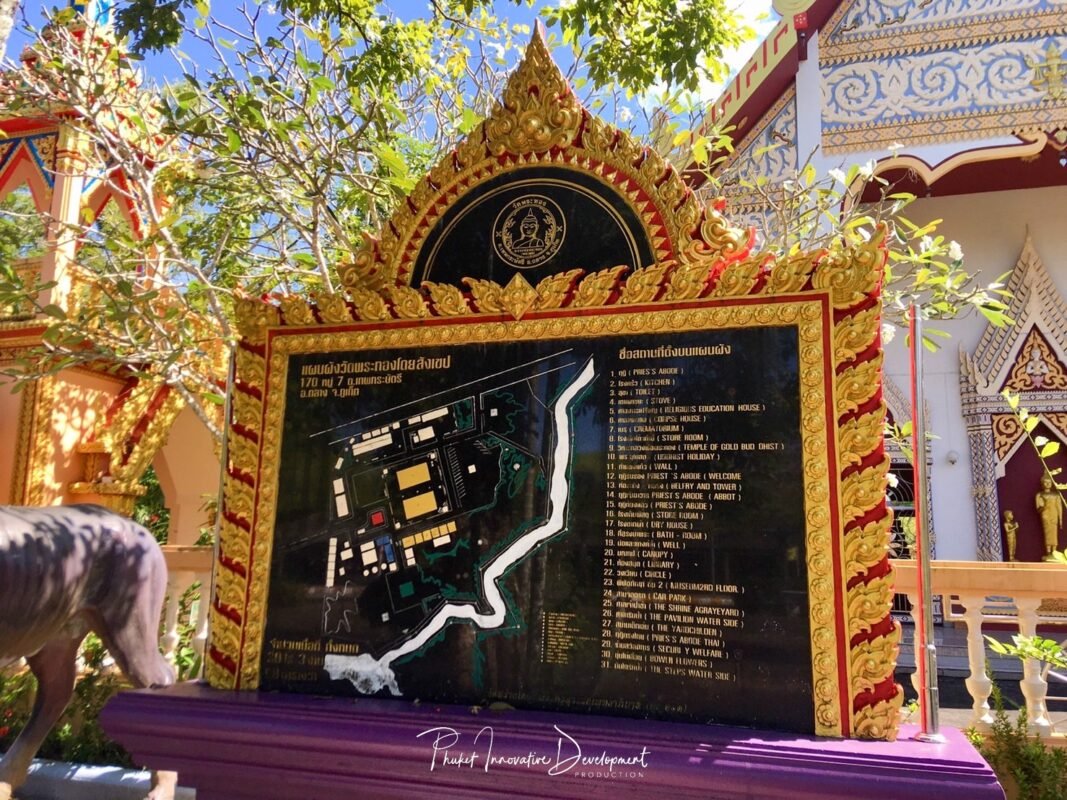
Furthermore, this temple also houses a local museum that collects a myriad of ancient artifacts and utensils used by the people of Phuket, providing an opportunity for future generations to study the rich history and heritage of the region.

